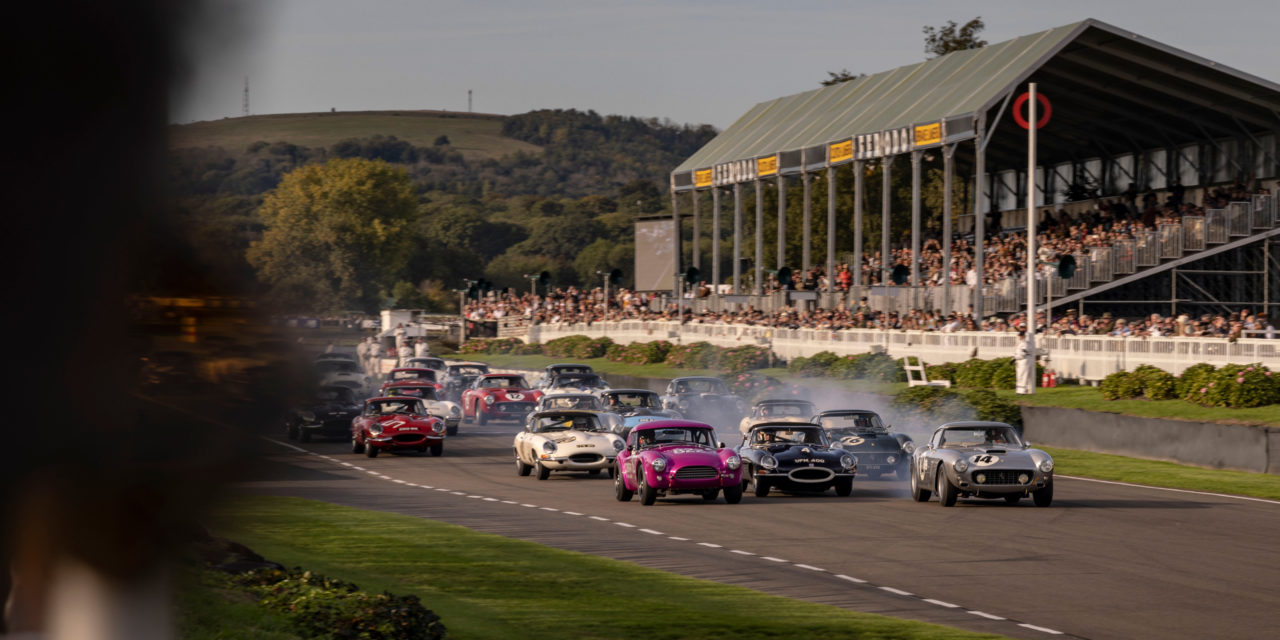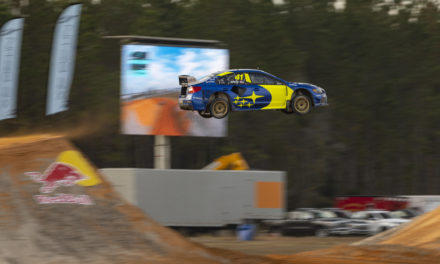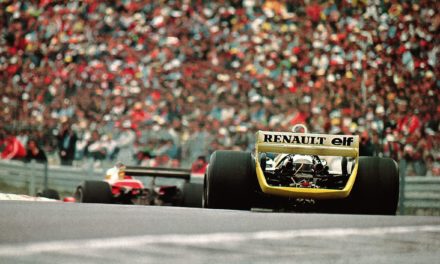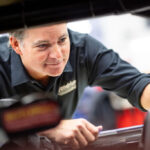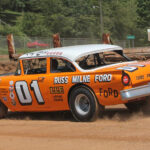What motivates top-flight racing drivers to take part in the Goodwood Revival, when they don’t know the car they’ll be competing in and are in a setting that is a far cry from the safety-first environment of today’s racing circuits? We took to the paddock at the 2023 Revival and asked five drivers who have made it to the pinnacle of their profession what draws them to the relaxed, retro-vibe of Britain’s pre-eminent historic race weekend.
Matt Neal, three-time winner of the British Touring Car Championship
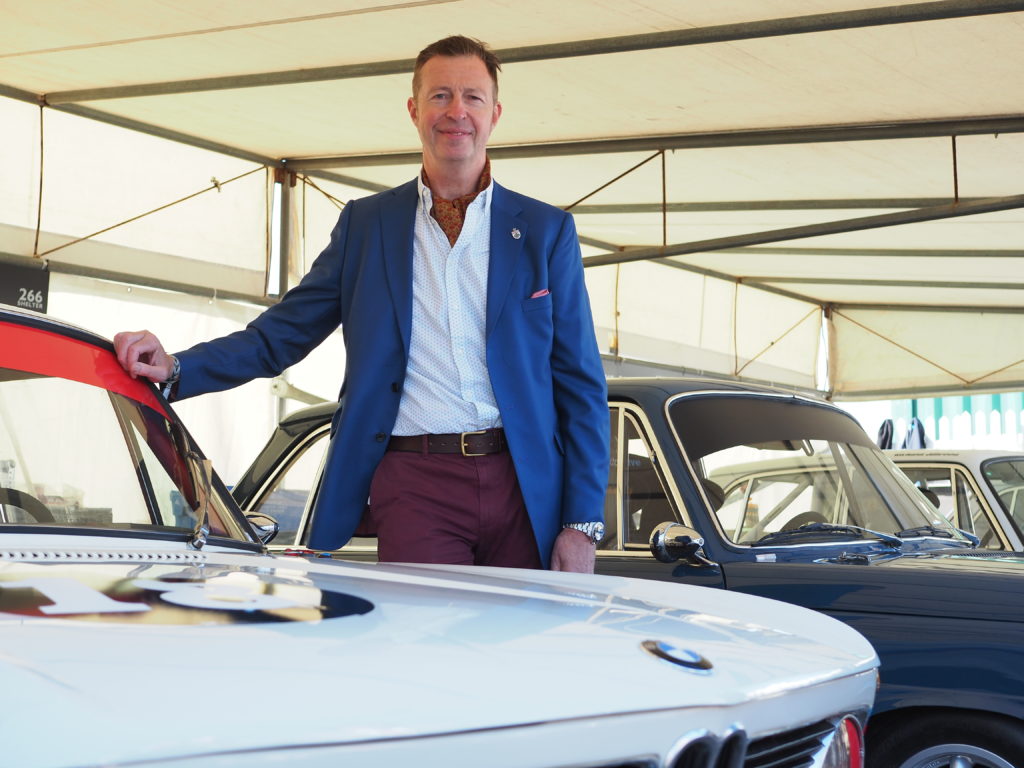
Nik Berg
What he’s racing: 1964 BMW 1800 TiSA
“If you turn the clock back 10 or so years before I got into historic racing, people were trying to get me to have a go but I was an advocate for safety, technology, and modern equipment. Then I got an invitation to Goodwood Revival, walked in, looked around, and said to myself, ‘I now get it’.
People come from all over the world to be here. It is the blue riband event of historic racing around the world, and to be a part of that is an incredible privilege.
I think driving historic cars with the older tires that Dunlop gives us is a completely different skillset. The first time I jumped in a Lotus Cortina, at Donington Park—and because there’s no data in the car for the driver to look at—I did about half a dozen laps and thought, ‘That’s close,’ came in and found out I was about five seconds off [the pace]! That’s lightyears away from the time. It’s because they need to be sliding, sliding on the way in, they’re sliding through the corner, and sliding on the way out, and it’s very unnerving if you’re not used to it. I always say driving a modern race car is not about driving it fast it’s about making it dance. That’s even more so the case with a historic car.
Of course there’s banter and old rivalries but above all there’s respect because you’re driving other peoples’ property. And often it’s the first time you’ve driven the car!”
Andy Priaulx, World Touring Car champion
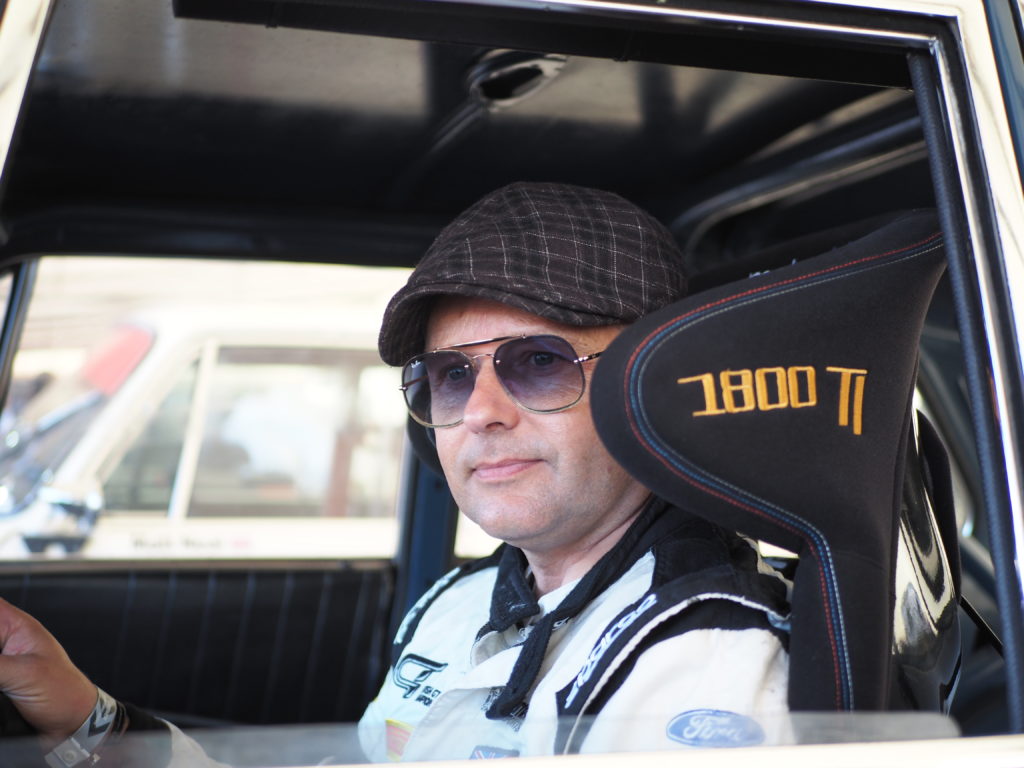
Nik Berg
What he’s racing: 1965 BMW 1800 TiSA
“It’s my first time back in a BMW and I’m just seeing if I fit in the car. I’m driving a few cars this weekend and I tend to like turning up, getting stuck in and scaring myself. I’m also driving an AC Cobra and an ex-Moss Jaguar [1955 HWM]. It should be fun—plenty of toys to play with this weekend.
The event is always a nice opportunity to get back together with your friends that you’ve raced with over the years. But also, just to be part of this amazing atmosphere—the racing’s really competitive, it’s good fun, respectful, and it’s nice to step back in time. I think historic racing has got an important part to play in motorsport’s history and future.
The current pressure on the scene is a tricky situation. Motor racing has always been about the glamour, the noise, the racing, and I think that was the appeal and it’s important to keep that. But motor racing has contributed massively towards the automotive sector over the years, developing cars, whether it’s hybrid or electric—it’s all, let’s say, been tested and trialed in the extreme in motor racing. So there’s a lot to be thankful for.
I feel very fortunate to have been involved in this environment for the last 25 or so years. It’s nice to have role models that have achieved a lot in racing and I respect them—so to be friends with them is a great privilege.”
David Brabham, Le Mans 24-Hour winner
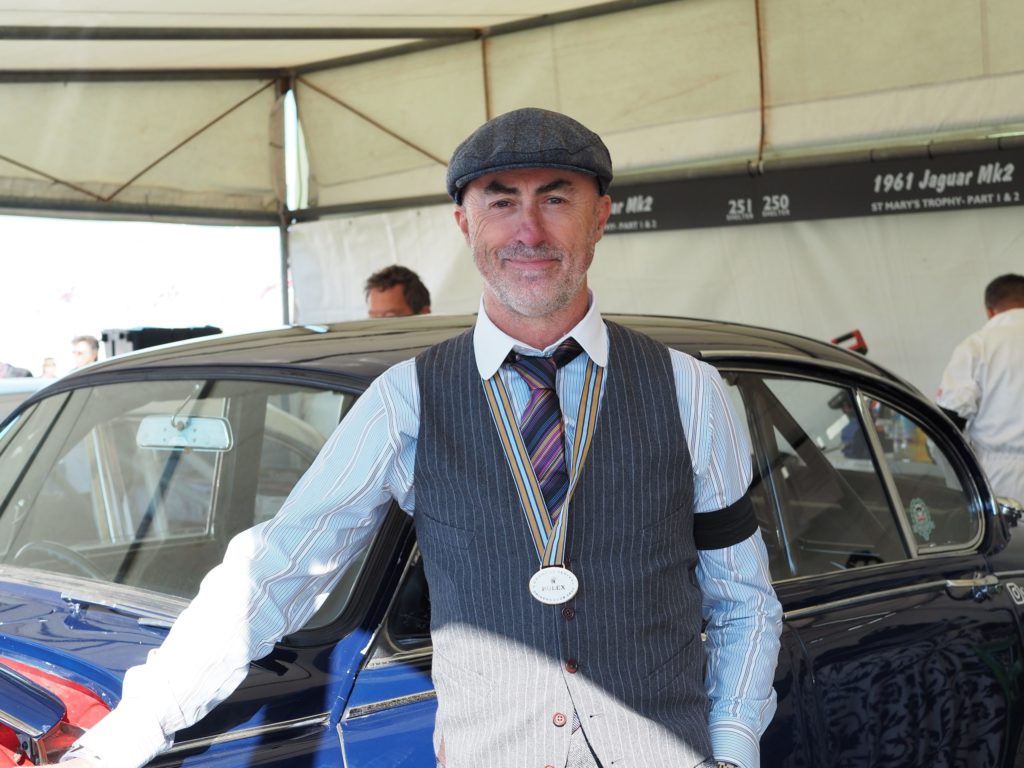
Nik Berg
What he’s racing: 1960 Jaguar MkII 3.8
“I think once you’re a racer you’re always a racer, so you always want to get in and drive it and we don’t often get the opportunity to drive these beautiful old cars. They behave so differently to what we’re used to with today’s racing. And just to be here for this type of event is special. Goodwood does it really well.
It’s the only classic event that I do each year. This place has a lot of history, and for me there is lot of family history. My father raced here and each of the first Brabham‘s first ever test would be here at Goodwood, when they arrived from Australia into the UK. And half of Dad’s ashes are here, next to Bruce McLaren’s, so for me it has a very special meaning.
Just coming here and seeing all the drivers that we raced against, or people that we looked up to and they inspired you to be a driver, now you get to race against them—it’s just a really great event and it’s just fun.
I met Grant [Williams] for the first time, yesterday, and saw the car for the first time, and I said, ‘Mate! Every time I looked at a video to find out about the thing, it’s literally sideways all the time. Are you driving that way because it has to be that way because it’s fast, or is it just because you love driving sideways?’ and he said, ‘Yeah, I just love driving sideways!’.
There’s a lot for me to learn. I go straight into qualifying learning the car. He says it’s an easy, predictable car to drive, which is what you want, and it’s got a bit of grunt which is important at this track because horsepower is king here.
The list of drivers in our race tomorrow is sensational. I’d be disappointed if we’re not in the top 10—we should be in there, but the bottom half.”
Gordon Shedden, triple BTCC champion
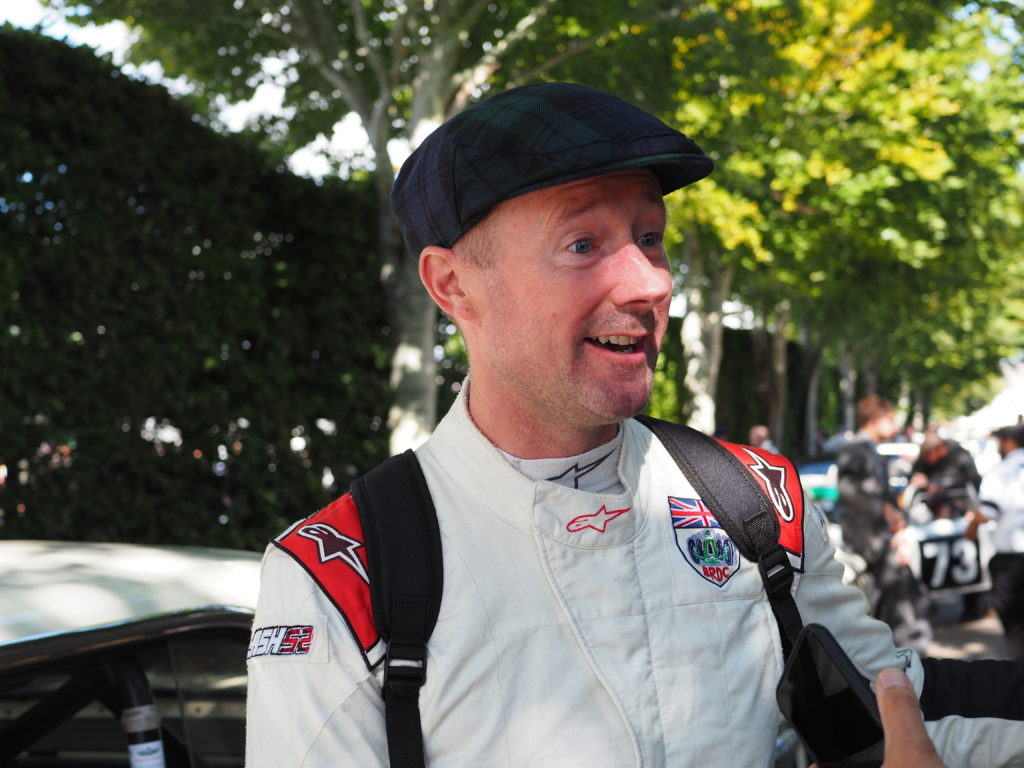
Nik Berg
What he’s racing: 1963 Ford Galaxie 500
“You’ve got to have respect for what the drivers did in this era. This event takes you back to an era when the drivers would drive different cars over a race weekend, whether that was Formula 1, followed by a Touring Car, followed by a Sports Car—they were very versatile drivers.
And I tell you what. Historic racing is the only racing that I actually enjoy, because the touring car thing is a job, it’s high-pressure and there’s a lot going on. It doesn’t matter if I miss an apex by six inches in a historic car because you can still do the lap time and you can have some fun. And the atmosphere of the event is so enjoyable.
I’ve never sat in so much as driven the Galaxie 500 before. I’ve not spoken to anyone who’s driven one. I’ve no idea if it’s got brakes; not a clue how it behaves. It’ll be fine! It’s got an engine and four wheels and a steering wheel so it’ll be fine.
In the past I enjoyed racing the Cortina, when I shared that with Matt Neal, because Jim Clark was a huge hero of mine and Jimmy won the BTCC in a Cortina [the 1964 British Saloon Car Championship as it was known]. Everything has its value, and last time I was here I was driving a Mini, and here I am now with a Galaxie 500, so you couldn’t go from one extreme to another. I think it’s important that we, as current racing drivers, we show respect for what’s gone before us.”
Jochen Mass, Le Mans 24-Hour winner

Nik Berg
What he’s racing: 1960 Aston Martin DB4 GT
“I’m a big fan of the event, like many others. When you walk around and see a full house, it’s fantastic. I think that it’s a wonderful event that gives people a unique feeling and I am very happy that we have this sort of weekend for people.
It’s important for the prosperity we have [for the hobby and motor sport] in the long term. We must not forget what brilliant engineers we have in the industry and what fantastic engines they have been building, improving and improving the [combustion] engine and it’s still not at the limit [of progress].
We have clean-burning combustion engines and we don’t need electric. Why electric?! It’s not cleaner, it’s not better; they’re too heavy, the batteries are too complicated. Of course, you could say there will be progress but excuse me, we don’t really need it; we need fuel for trucks and planes, and we need clever fuels [synthetic] which we have already.”

